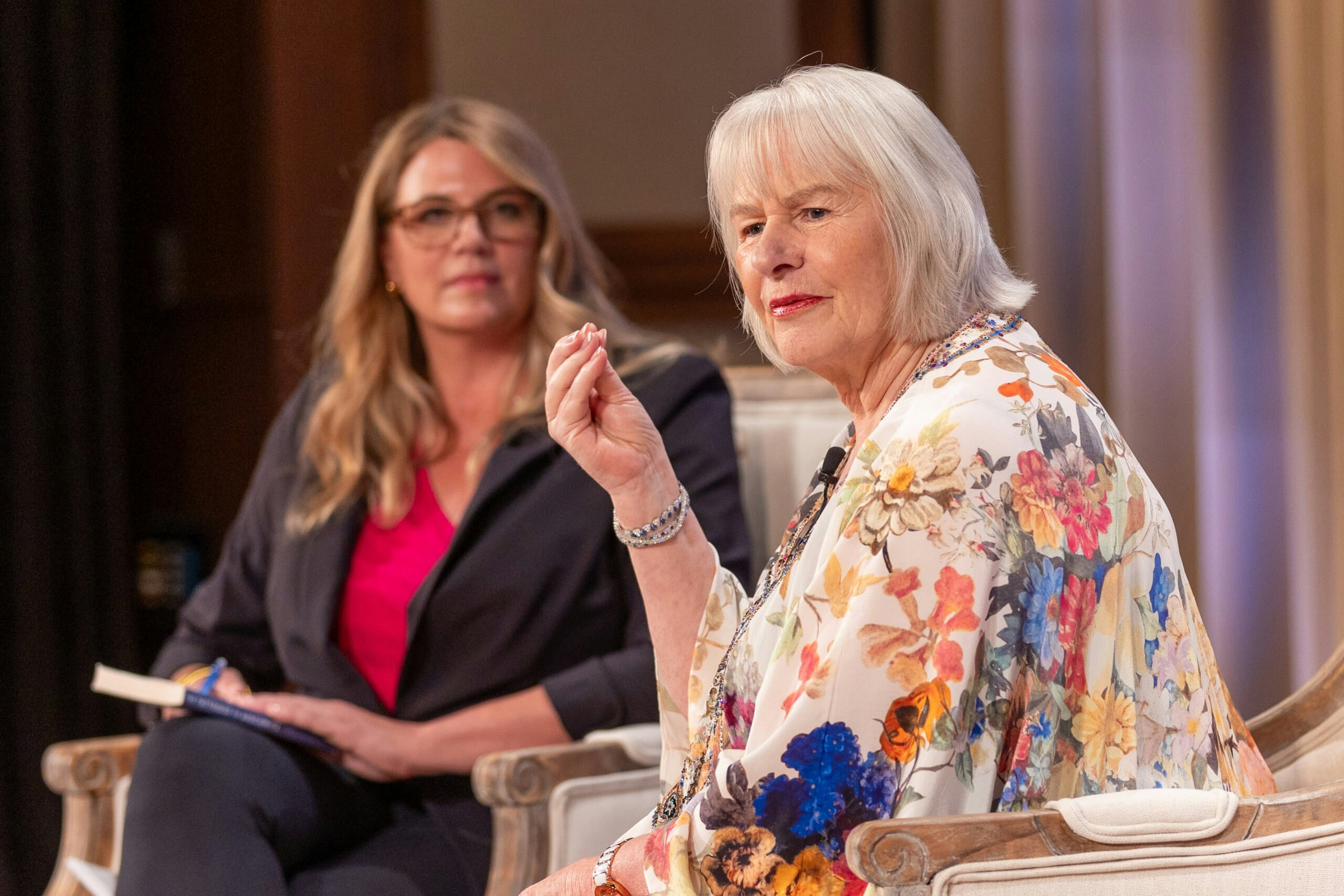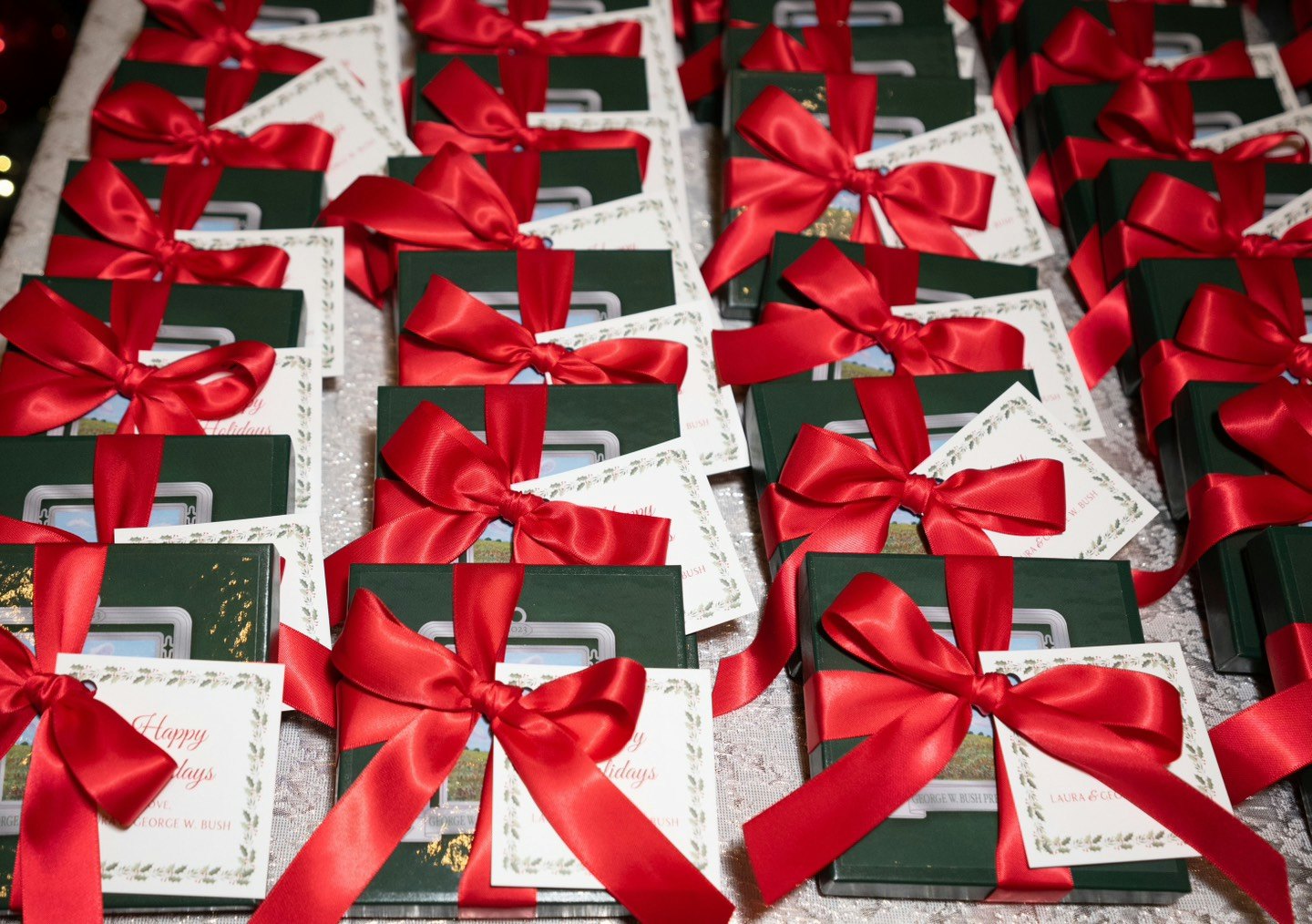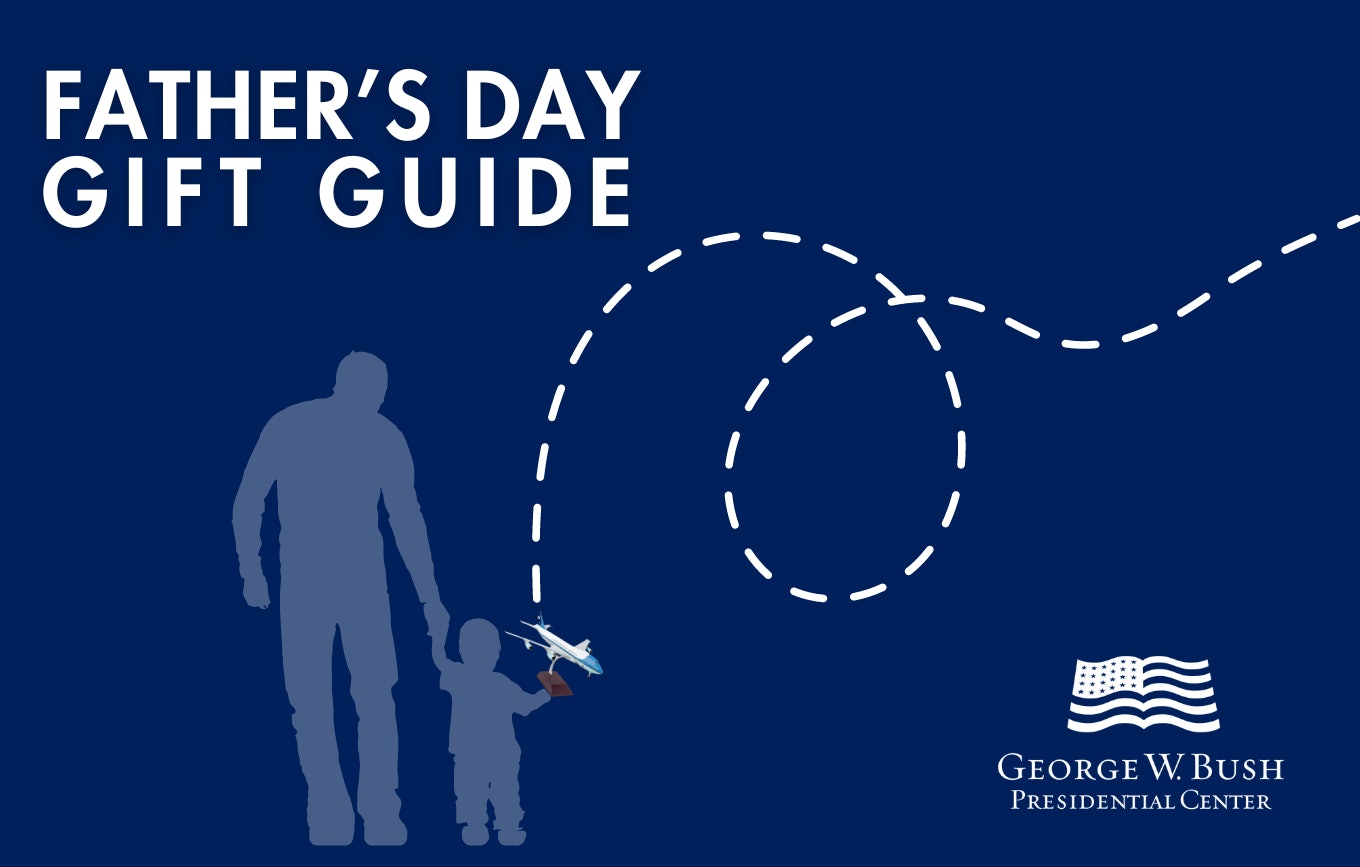At a recent Laura Bush Book Club edition of Engage at the Bush Center, presented by NexPoint and supported by H-E-B, author Heather Morris sat down with Anne Wicks, the Don Evans Family Managing Director of Opportunity and Democracy at the Bush Institute. They discussed The Tattooist of Auschwitz, a No. 1 international bestseller that sold more than 12 million copies in 47 languages and original series on Peacock.
Missed the event? Watch the recording here.
Here are five takeaways from the Laura Bush Book Club with “The Tattooist of Auschwitz” Author Heather Morris.
Light always prevails in darkness. Before Author Heather Morris takes the stage to discuss The Tattooist of Auschwitz with Anne Wicks, Don Evans Family Managing Director of Opportunity and Democracy at the George W. Bush Institute. Mrs. Bush reminds us that the story of Lale and Gita “opened readers’ eyes to a time that’s impossible to imagine. And they show us that even in the darkest depth of horror, there is life, there is hope, and there is love.”
If you can’t find a good reason to say “no,” consider saying “yes.” Sometimes, what seems to be a spontaneous inquiry is ultimately a cracked door that opens wide to unique opportunities—and that’s what Morris realized after saying “yes” to meeting with Lale Sokolov to hear his story. If she hadn’t taken time to sit down with a stranger and listen to him, she wouldn’t have a friendship with one of the most influential people in her life, and the story of The Tattooist of Auschwitz may have faded away with Lale after his passing.
Right place, wrong time may mean just “not yet.’ During the conversation, Morris says, “It was a matter of finding the right time for [The Tattooist of Auschwitz] to come out.” Having met Lale 20 years before the book’s release and writing the story, Morris had to wait for the right time to amplify Lale and Gita’s story. The desire was there, but the opportunity hadn’t presented itself. Eventually, time and opportunity aligned – and the patience paid off, as Lale’s story became an international bestselling book and a television show on Peacock. “It wasn’t the right time for the world to hear again stories of the Holocaust,” says Morris.
One person’s experience of an event isn’t the full story, but it is their story. Even though the book has faced criticism for some historical inaccuracies, many see The Tattooist of Auschwitz as a work of art and one account of time during the Holocaust. Morris warns that we can never take one person’s perspective to understand the entirety of an event. Instead, we must remember that “individual stories make up the sum of the story.” She also reminds us that memory, including Lale’s, “is something that which is fallible. We like to remember things the way it feels good to remember them.” And when people asked Lale why a Jewish person wasn’t telling his story, he said “how could they tell my story when they have their own?” In Lale and Gita’s case, their story was one of many from the Holocaust.
Share your story and never forget others’ stories. A story is preserved and amplified when shared with others. In her concluding remarks, when Wicks asked Morris for a call to action, Morris says, “Never forget. And the people who you know and who are a part of your life, share with them so that they never forget too.”
Want to stay up to date with all the events and news happening around the Bush Center? Subscribe to our newsletter here.























